Hydraulic fracturing (HF) induced earthquakes
It has long been observed human activities could lead to earthquakes, for example, water reservoir impoundment, underground mining, and conventional oil and gas production. It is in recent twenty years, people realized that anthropogenic injection activities like waste water disposal, geothermal energy exploration, and hydraulic fracturing (HF) could also lead to earthquakes.
Fluid injection volume during shale gas production is much smaller than long-term waste water disposal. It was previously considered shale gas production is not the primary reason for earthquakes. Such inference is consistent with some simulation results and the observation that only limited shale gas production platforms are accompanied with earthquakes. However, there do occurred moderate earthquakes in shale gas fields. Therefore, geological susceptibility is proposed to to be an important aspect in earthquakes occurred in shale gas production areas.
Earthquakes occurred in shale gas fields
With the growing demand of energy resources, shale gas has became an important supplementary in addtion to ordinary oil&gas. Shale resources is widely distributed around the world, with a total volume of more than 214 trillion \(m^3\). Among all these countries, China owns the largest volume.
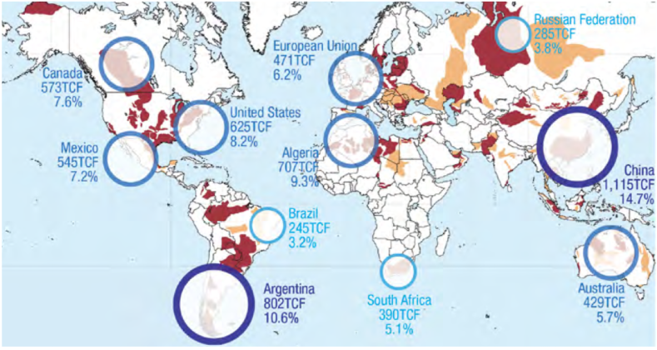
World shale resources distribution (TCF:Trillion cubic feet. Credit: UNCTAD secretariat)
Currently, massive shale gas production is conducted China, Cananda, and USA, in comparison to other two countries, China’s production volume is quite small.
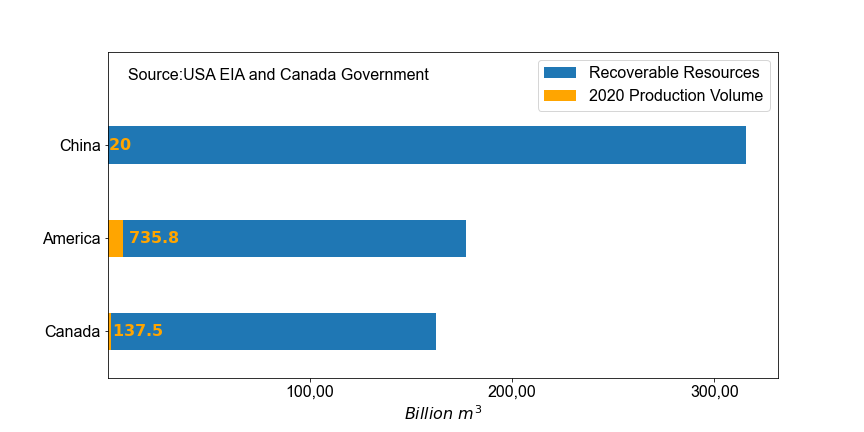
Recoverable resources and shale gas production volume of China, America, and Canada
However, increasing reported cases of earthquakes occurred in shale gas fields have raised serious social concern. The magnitude of these earthquakes could reach as high as \(M_L\) 5.7, which occurred in the Sichuan Basin, China in 2018.
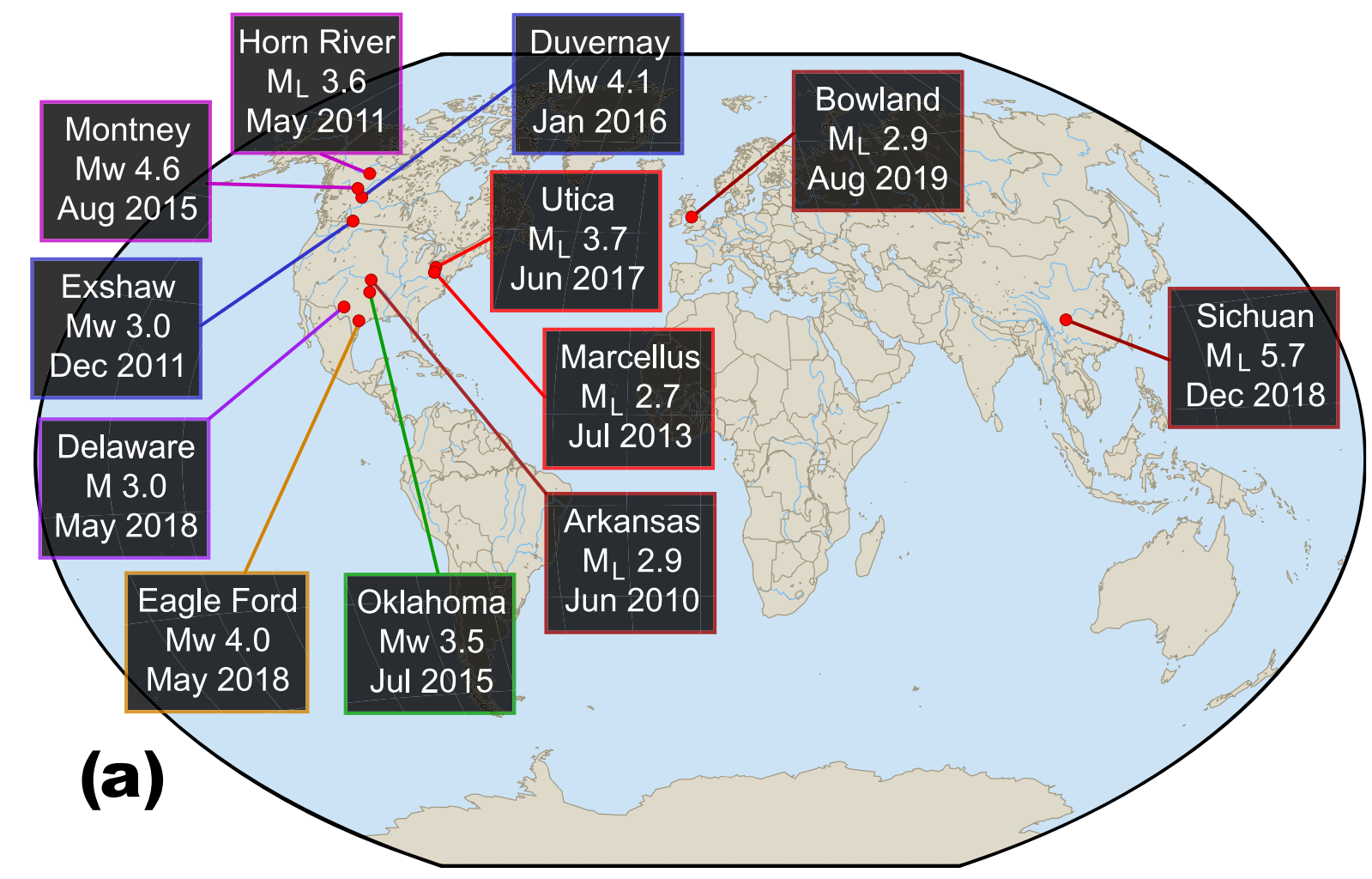
Reported largest magnitude earthquakes in different shale gas fields (Schultz et al., 2020)
Destructive earthquakes could lead to serious damage to local residents and properties, for example, the Mw 4.3 event occurred on 25th February 2019 in the Weiyuan shale gas field (WSGF) is assumed to be the first reported deadly earthquake that is related with shale gas production. In september, another event with moment magnitude of 5.0 struck the northeastern WSGF.

Collapsed buildings during the Mw 5.0 event in the Weiyuan shale gas field. This earthquake leads to 1 death and 63 injuries (credit: sohu.com)
Therefore, to reply serious social concerns, to assess seismic risks, and to mitigate seismic hazards, it is imperative to understand why and how these earthquakes occurred.
Hydraulic fracturing
There is one advanced technology used in shale gas production, called hydraulic fracturing (HF). High-pressure fracking was conducted in horizontal wells to open cracks in low-permeability shale layers so that gas could have paths to be extracted out. Cracks are parallel to local maximum horizontal stress (\(SH_{max}\)) to avoid closing under high pressure, sands were sometimes included in fracking liquid to support opened cracks.
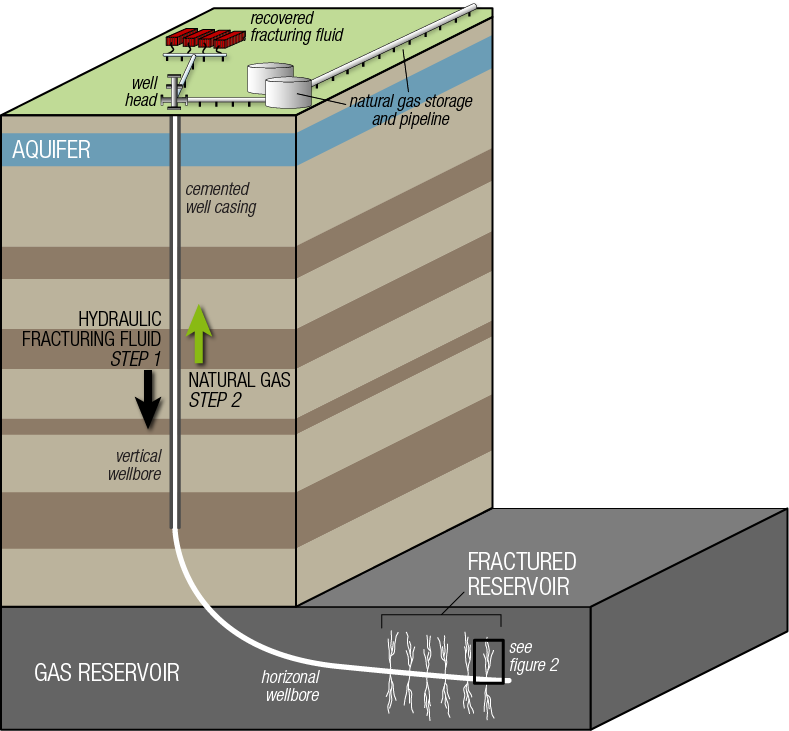
Schematic plot showing the shale gas production. High-pressure fracking was conducted is horizontal wells (credit: Mariana geological survey, USA)
For induced earthquakes, three mechanisms are proposed to explain the occurence of seismicity. There are:
Poroelastic effects. The injection process will increase the load on faults and thus leads to earthquakes more details.
Pore pressure. The injection process could increase the pore pressure on faults that are physically connected to injection area, which weakens faults and lead to earthquakes more detailes.
Aseismic slip. In stable srata, faults present slow slip pattern, which will not generate earthquakes. Such slip(strain) will be released in the format of earthquakes in unstable strata more details
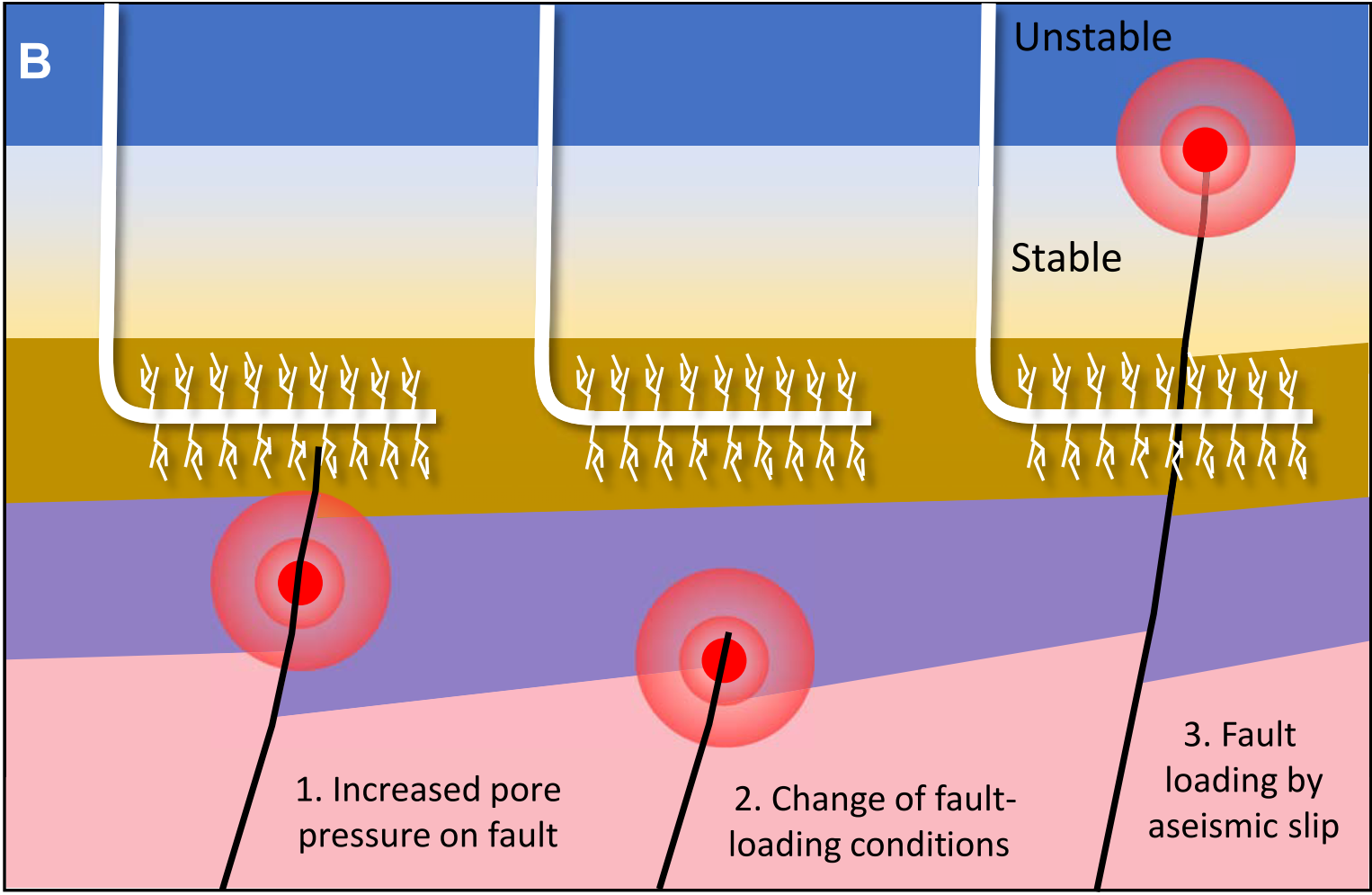
Three mechanisms were proposed to explain the occurrence of injection induced earthquakes (Eyre et al., 2019)